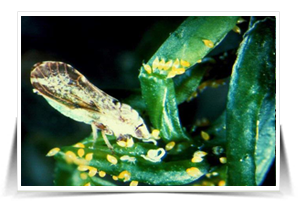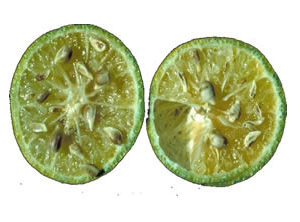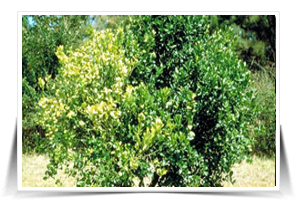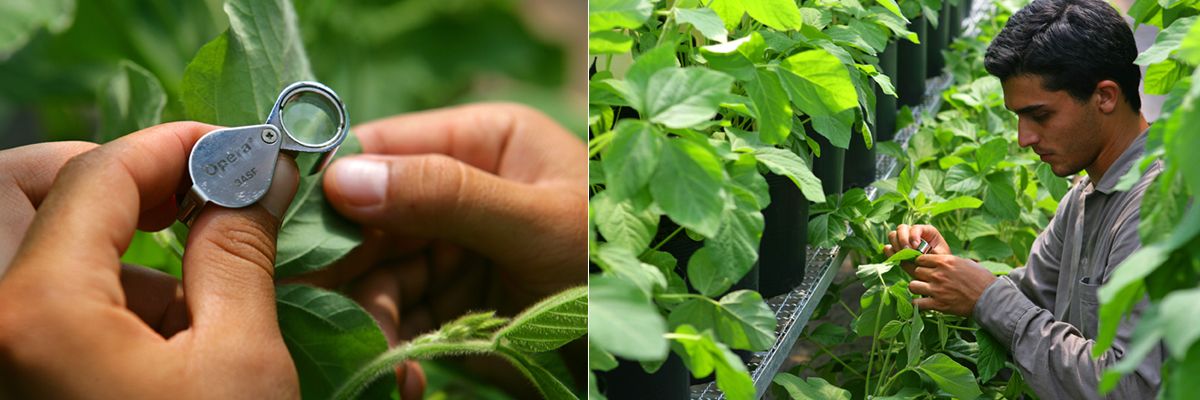A bacteria that destroys citrus crops
- Only in Brazil, this disease causes $120,000,000 of loses each year.
- It is believed to be responsible for the death of more than 50,000,000 trees in Asia and 10,000,000 in Africa over the last seven years.
- t is considered to be one of the most destructive diseases due to the severity of its effects, the speed at which it spreads, and because it affects all citrus species.
- During 2011, countries such as Mexico and Costa Rica have been on phytosanitary alert. In Mexico alone, 520,000 hectares could be affected.
- One of Mexico's most important crops is the orange. The country produces 6.7 million tons annually, which represents $615,000,000 dollars. Around 67,000 growers are dedicated to orange production, which generates 70,000 jobs directly and 250,000 indirectly.
Recognize, control, and prevent Citrus Greening in citrus crops. Interview with the agronomist, Jorge Arturo Solano Sibaja, Director of the Región Huetar Norte - National Phytosanitary Service, Ministry of Agriculture and Livestock of Costa Rica.

Invited Expert:
Ing. Agr. Jorge Arturo Solano Sibaja
Director of the Región Huetar Norte - National Phytosanitary Service, Ministry of Agriculture and Livestock.
Costa Rica.
What is Citrus Greening?
Ans: Huanglongbing (HLB) is the plant's response to the presence of the Candidatus liberibacter asiaticus bacteria in its tissues. The main effects of this disease are: the progressive deterioration of plant vigor; premature fruit ripening and falling; yellowing of the leaves in asymmetric patterns; and eventually, tree death.
What are the characteristics of an infected tree?
Ans: The leaves turn yellow with green spots, the fruits can become deformed and the ripening process interrupted, the branches of the trees begin to die and eventually the entire tree dies.

J.M. Bové , INRA Centre de Recherches de Bordeaux, Francia.
Damage Caused by the Disease:
- Plant death.
- Reduces fruit weight.
- Reduces the fruit's sugar level (an important parameter for the industry).
- Increases the fruit's acidity level.
- Reduces the percentage of juice.
- Reduces fruit size and alters the color and form.
- A young plant will not be able to produce fruit.
- Affects all varieties of tree tops, regardless of characteristics.
- Alters fruit form and taste
What biological, physical, and environmental factors facilitate the infection and propagation of the disease?
Epidemiological aspects
Ans: The disease is spread by the Asian citrus psyllid, Diaphorina citri. This insect feeds on the new shoots of citrus trees, and if a tree is infected, the insect will carry the bacteria in its buccal system, thereby spreading the bacteria to healthy trees or plantations.
Characteristics of the vector or transmitter:
- D. D. citiri is a very small hemiptera (Psyllidae) measuring 2-3mm in length. Its main distinguishing characteristics are: dark edging around the periphery of the wings with a pale gap near the apex, and the 45 degree angle posture used by the adult as it sits on the tree.
- The eggs, which are long and yellow to orange in color, are laid on the leaves of new shoots.
- It goes through five nymphal stages. During the last stage, it reaches a length of 2mm, it is flat and orange with widely placed red eyes, and it is mobile.
- Due to its eating habits, the insect is capable of acquiring the bacteria from infected trees and transmitting it to healthy ones.
- The insect not only drinks the vegetative sap from citrus, but also from ornamental plants such as Murraya paniculata, which results in an excellent natural reservoir for both the bacteria and the vector.
- The development of D. citri requires high temperatures (greater than 30º C / 86º F). The insect's population growth is directly related to the availability of new shoots, which means that the appearance of D. citri can coincide with the appearance of the citrus leafminer (Phyllocnistis citrella Stainton).

What regions or crop conditions are more predisposed to become infected with this disease?
Ans: The disease has been found in every kind of tree, region, climate, and altitude, and in healthy plants with good nutrition, as well as in volunteers and other trees growing on their own without any kind of agronomic management.
What must be done to control the spread of the disease and/or eradicate it from the plantation?
Ans: The strategy has three pillars: inspection for early diagnosis of the disease, elimination of infected trees, and aggressive control of D. citri. This strategy should be thought of as a chain, since it is practically impossible to eradicate the disease from the crop. No cure has been found for this disease, which is why infected trees must be eliminated in order to avoid contamination. Finally, Integrated Pest Management is required to keep the population of the insect vector as small as possible. This includes precise applications of insecticides.
In general, what kinds of losses have been incurred in Latin America during 2010 due to Yellow Dragon Disease?
Ans:Data provided by the International Regional Organism for Agricultural Health (OIRSA in Spanish) indicates that in Brazil, three million sweet orange trees were destroyed in 2004; in Florida, over a three-year period, damages caused by HLB and Canker (another key citrus disease caused by a different bacteria) caused losses estimated at US$ 9.3 billion. Costa Rica has invested approximately 500 million colones (approximately US$ 1 million) in prevention campaigns, training programs, laboratories and related expenses.

J.M. Bové , INRA Centre de Recherches de Bordeaux, Francia.
In your opinion, did the significant changes in climate that occurred during 2010 cause the disease to have a greater impact on citrus crops?
Ans: Scientists do not dismiss this as a possibility, and due to the fact that the disease has been spreading throughout the Americas, mainly on the Atlantic side, it is thought that weather events such as hurricanes could help the disease spread to other continents.
Other Sources:
Diario El informador de Mexico
Diario ADN.es
Estado Experimental Agroindustrial


















